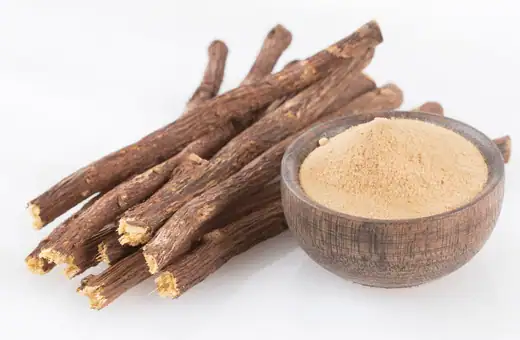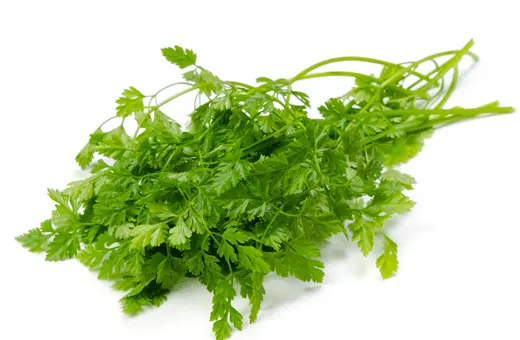Mulled wine is the most popular choice and a delicious traditional winter drink during cold months in many European countries. The key ingredient of Mulled wine is Star anise.
But if you’re missing star anise, don’t worry! A few substitutes for star anise will give your mulled wine the same flavor and you’ll love to wrap yourself up in during the cold months.
So go ahead and make your favorite recipe with a different spice substituted for star anise in mulled wine. You won’t be disappointed!
What is Mulled wine? What does mulled wine taste like?
Mulled wine is a spiced wine typically made with red wine, spices, and fruit. The spices usually include star anise, cloves, cinnamon, nutmeg, and orange peel. It is often served around the holidays but can be enjoyed any time of year.
Additionally, mulled wine is easy to make at home and can be customized to your own taste.
Mulled wine taste like a mixture of star anise and red wine spice with a cinnamonic aftertaste.
Substitute For Star Anise In Mulled Wine
1. Licorice root powder – suitable substitute for star anise in mulled wine
Licorice is the mimic taste to star anise, so substituting licorice root powder for the star anise is always the first choice in mulled wine. Simply add a tsp or two to your batch of mulled wine.

You can find licorice root powder at most health food stores.
2. Use Licorice Liqueur instead of star anise to make mulled wine delicious
For a change of pace, why not substitute licorice liqueur for star anise in your next batch of mulled wine?
It’s a delicious way to add a unique twist to this wintertime favorite. Trust us, your guests will be impressed!
3. Anise Seeds give a similar flavor to star anise in mulled wine
When making mulled wine, you can substitute anise seeds for star anise. This will give the finished drink a similar flavor profile, with a slightly more pronounced anise flavor.
Whether you don’t have either of these ingredients on hand, you can also use a combination of cinnamon and cloves to spice your mulled wine.
4. Try spicy Chinese Five-Spice Powder to substitute star anise in mulled wine
If you’re searching to add a little more depth of flavor to your mulled wine, try substituting Chinese Five-Spice Powder instead of the star anise.
The combination of cloves, cinnamon, fennel, and Sichuan pepper in the powder will give your mulled wine a complex and slightly spicy flavor that’s perfect for chilly weather.
Just be sure to start with a small amount and adjust to taste, as too much Five-Spice Powder can quickly overwhelm the other flavors in the drink.
5. you can use Allspice to alter star anise to add aromatic flavor to mulled wine
Allspice and Star anise has exchanged a good taste between them, so if you have allspice adds it into the wine instead of Star Anise.
Allspice is a spice that is often used in baking and gives baked goods a warm, aromatic flavor. Star anise, on the other hand, is a common ingredient in Chinese cooking and has a licorice-like taste.
Both spices will add a unique flavor to your mulled wine, so it’s up to you to decide which one you prefer!
If you are using fresh allspice berries, crush about 10-12 berries and add them to the pot. If you are using ground allspice, use about 1/2 teaspoon. Let the mixture simmer for about 15 minutes, stirring occasionally.
After the allspice has simmered in the mixture for about 15 minutes, add 1/4 cup of brown sugar (or to taste) and stir until dissolved. Let the mixture continue to simmer for another 5-10 minutes, or until it has thickened slightly.
Serve over cooked rice, quinoa, or other grain of choice.
6. Tarragon- ideal replacement for star anise in mulled wine to add herbal flavor
Have you heard about Tarragon, am pretty much sure you do. Tarragon is good Star anise alternative and gives your wine a more herbal flavor that is still warming and perfect for winter celebrations.
If you are using dried tarragon, use 1/2 teaspoon. If you are using fresh tarragon, use 1 tablespoon.
Add the tarragon (and any other herbs you are using) to the pan and cook for an additional minute. Then, add the vinegar and chicken broth. Carry the combination to a boil, lower the flame and let it simmer for about 10 minutes.
After the 10 minutes, add the heavy cream (or half-and-half). Let the sauce simmer for an additional 5 minutes, or until it has thickened slightly.
Season with salt and pepper to taste. Serve hot, overcooked chicken, fish, or vegetables.
7. Anise Extract – a decent alternative for star anise in mulled wine
If you’re looking to make a mulled wine and don’t have any star anise on hand, you can substitute anise extract for the star anise.
Simply add a few drops of the extract to taste. You may need to add more or less depending on how strong the extract is.
8. Combine Caraway Seeds With Tarragon to replace star anise in mulled wine
Caraway seeds mixed with tarragon leaves can make a tasty and refreshing tea. This tea can be hot or cold and is especially nice on a warm day.
To make this tea, simply mix together 1 teaspoon of caraway seeds with 1 tablespoon of tarragon leaves. Add this combination to a cup of boiling water and let it steep for 5 minutes. Then, strain the tea and enjoy!
The caraway leaves will give the dish a milder flavor without changing the overall taste too much.
If you like to get the full flavor of star anise, use it sparingly. A little goes a long way, and too much star anise can make a dish taste bitter.
9. Try Anise Liqueur to alter star anise in mulled wine
You can substitute anise liqueur for star anise in any recipe. Just be aware that the liqueur will be much sweeter than the star anise, so you may want to adjust the sugar or other sweeteners in the recipe accordingly.
If you want to avoid alcohol altogether, you can use a non-alcoholic anise extract, though the flavor won’t be quite as intense.
10. Use Caraway Seeds in place of star anise in mulled wine to add more savory flavor
Caraway seeds are a good substitute for star anise in mulled wine. Caraway seeds have a slightly bitter taste. Try using half amount of caraway seeds for 1 teaspoon of star anise.
11. Combine Fennel Seeds With Ground Anise Seeds to substitute star anise in mulled wine
Fennel seeds and founded anises seeds are the best combination to bring star anise flavor, the sweetness of fennel and spiciness of Anise seeds make the wine more flavorful and wormth.
Start by mixing 1 teaspoon (2 grams) of ground anise seeds with 1 tablespoon (9 grams) of fennel seeds. From there, you can modify the proportion to suit your taste.
Once you have your desired ratio, simply store the mixture in a sealed container at room temperature. It will preserve for a few months, so you can make a big batch and always have it on hand.
Now that you know how to mix fennel and anise seeds, put this combination to good use! Here are a few ideas:
-Sprinkle it over roasted vegetables before serving.
-Add it to homemade sausage or ground meat recipes.
-Mix it into bread dough or sprinkle it on top of finished loaves.
-Use it in place of fennel seed in any recipe.
-Make your own Italian seasoning blend by mixing fennel and anise seeds with other common herbs and spices.
12. Try Cloves in place of star anise in mulled wine to make it spicy
If you’re searching to add a bit of spice to your mulled wine, cloves are a great replacement for star anise. This swap will give your drink a warm, earthy flavor that is perfect for winter sipping.
Simply add a few whole cloves to your mulled wine recipe in place of the star anise, and enjoy!
13. Cinnamon Powder – decent replacement for star anise in mulled wine
In mulled wine, cinnamon powder can be used in place of star anise. This will change the flavor of the wine, but it will still be enjoyable.
If you like to keep the traditional flavor of mulled wine, then stick with star anise.
14. To add herbal flavor to mulled wine, try Chervil in place of star anise
To make a more traditional mulled wine, you can substitute chervil for the star anise. This will give the wine a more herbal flavor.

If you want to experiment with other spices, try adding a few cloves or a cinnamon stick to the mix.
You can also use white wine instead of red if you prefer. Just be sure to adjust the sweetness level to suit your taste.
How to Serve Mulled Wine?
There are many ways to serve mulled wine, but the best way is to keep it simple.
To serve mulled wine, heat the wine and spices in a pot on the stove. Then, pour the mulled wine into glasses.
Next, serve it with a straw or over ice. If you want to get fancy, you can garnish it with a cinnamon stick or some fresh fruit.
Whatever you do, ensure you enjoy your mulled wine!
What to do with leftover mulled wine?
You can use up your leftover mulled wine in a few different ways. You could reheat it and enjoy it as is, or you could use it as the base for a delicious cocktail.
You could also cook with it, using it to make a tasty sauce or glaze for meats or veggies.
Whatever you decide to do with it, we’re sure you’ll find a way to enjoy every last drop of your mulled wine!
How to Store Leftover Mulled Wine?
Mulled wine is a holiday favorite, but what do you do with the leftovers? Here’re a few tips on how to store mulled wine so you can enjoy it all season long!
1. Let it cool completely before storing.
2. Pour into a clean, airtight container.
3. Preserve in the fridge for up to 2 weeks.
4. Reheat gently before serving.
Read More- star anise substitute five spice
Check more, Burgundy wine substitutes
Best Mulled Wine Recipe
There’re many recipes for mulled wine, but this is our favorite. These recipes are ideal for warming up on a cold winter night.
Ingredients:
- · 1 bottle of red wine
- · 1 orange, sliced
- · 1 lemon, sliced
- · 1 cinnamon stick
- · 3 cloves
- · 1/2 cup sugar
Directions:
1. Pour the wine into a pot and add the orange slices, lemon slices, cinnamon sticks, cloves, and sugar.
2. Flame the mixture over low heat until it is hot but not boiling.
3. Serve in mugs or glasses, and enjoy!
What is the Best Wine for Mulled Wine?
There are many different types of wine that can be used for mulled wine, but not all of them are created equal.
In general, I use a full-bodied red wine for your mulling base, as it will stand up well to the spices and other flavors that you’ll be adding. Some good choices include Merlot, Cabernet Sauvignon, or Shiraz.
A Beaujolais Nouveau or Pinot Noir can also work well if you’re searching for something a bit lighter. Avoid using white wines or sparkling wines, as they tend to get overpowered by the spices.
Once you’ve chosen your wine, it’s time to start mulling! The basic method is to combine all of your ingredients in a pot or slow cooker and heat them gently until everything is warmed through.
Be careful not to let the mixture boil, as this can cause the alcohol to evaporate and change the flavor of your mulled wine. Once everything is hot, ladle it into mugs or glasses and enjoy!
If you’re looking to add a bit more flavor to your mulled wine, there are a few other ingredients that you can add.
Citrus fruit such as orange or lemon is a classic addition and can help to brighten up the flavor of the wine. Other popular additions include cinnamon sticks, cloves, nutmeg, and ginger.
Get innovative and see what flavors you like best!
What spice is similar to star anise?
The spice anise is similar to star anise in taste and aroma. Both spices have a licorice-like flavor with a hint of sweetness.
Anise is used in many cuisines, including Chinese, Indian, Middle Eastern, and European. Star anise is used primarily in Asian cuisine.
Alternative for star anise in beef pares
Many spices can be utilized as an alternative to star anise in beef pares. Some of these include cloves, cinnamon, and cardamom. These spices will add a similar flavor profile to the dish without being overpowering.
Experiment with different varieties to see the perfect flavor for your beef pares.
FAQs related to Star Anise in Mulled Wine
Q1. How do you counteract bitterness in mulled wine?
There’re a few methods to counteract bitterness in mulled wine.
1. One way is to add a sweetener, such as honey or sugar.
2. The second way is to add an acidic ingredient, such as citrus juice or vinegar, and citrus fruits, such as oranges or lemons.
3. Thirdly, you can add spices, such as cinnamon or nutmeg to help balance out the bitterness.
4. Some people also find that adding a small amount of spirit, such as brandy, rum, or whisky, helps to round out the flavors.
When it comes to choosing wine for mulling, opt for a full-bodied red wine with plenty of flavors.
Some good options include cabernet sauvignon, merlot, or syrah.
If you’re using white wine, look for a varietal with some sweetness, such as riesling or gewürztraminer.
Q2. What Herb is similar to anise?
Fennel is an herb that is similar to anise in both taste and appearance. Both herbs are members of the Umbelliferae family, which also includes cumin, dill, and caraway.
Fennel is native to the Mediterranean region, while anise is native to Southwest Asia. Fennel has a milder flavor than anise and is often used in cooking as a flavoring agent or spice.
Anise has a stronger flavor and is more commonly used as a digestive aid or for its licorice-like taste.

